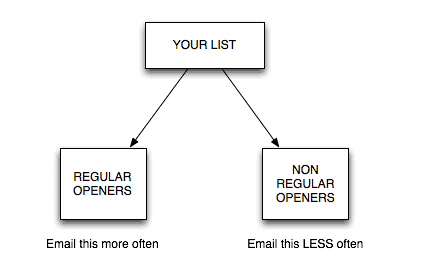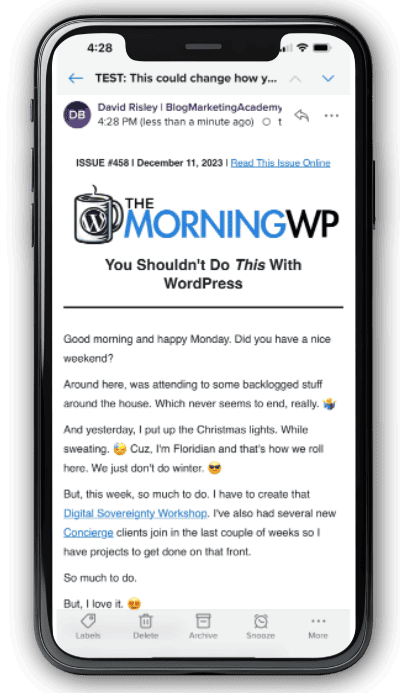One of the things that we all want with our email list is high open rates. We want to know that when we send out an email that the highest percentage of our list as possible will actually open it.
Now, one of the things to keep in mind is that systems like Aweber use what is called a tracking image to actually track whether the email has been opened. However, a lot of email web services such as Gmail block images by default. So, by its very nature, tracking of opens is sort of inaccurate because a lot of these web based email services will block it and Aweber simply has no way to know whether the email was opened.
Now, if somebody actually clicks on a link in that email, Aweber will still count it as opened. Because obviously, they’d have to open it in order to click that link.
So, keep in mind that the numbers that you see inside of a system like Aweber are probably lower than actual reality when it comes to open rates.
But all that said, we still want a lot of people to open our emails. One of the things I talked to somebody about recently at an event was how it really isn’t all about “blasting” the list anymore.
What really is the most important thing when it comes to managing our email list is ENGAGEMENT. It’s actually getting people to engage with what we send.
Here’s The “How To”…
Obviously, getting them to click on things is great, but here’s a really cool piece of advice and that is to segment out the people who regularly open your emails versus the people who don’t.
When you send out a broadcast, instead of sending out to the entire list every single time, you want to focus on the people who routinely open your emails because those people want to hear from you. The people who do not routinely open your emails – they may not want to hear from you or they’re just likely less interested. So, what you might want to do is send to those people less often than you do the people who regularly open.

Now, I’m not going to sit here or recommend how often you should send. Everybody’s different. You manage your list the way that you want to manage your list. My piece of advice is simple and that is to have a segment inside of Aweber or whatever mail system you use and simply say… these people regularly open my emails and these are the people who do not.
And whatever criteria you want to set for that is fine. For example, have they opened up one of my emails in the last 30 days? If they have, then go on and put them on to the open segment. If they have not opened an email in, say, 30 days, then go ahead and put them on the non-open segment.
You don’t want to delete them, necessarily. Someday, you might. I’ve done that before. I’ve actually purged a lot of people off my email list that, according to my records, were never opening anything. Because why have them on my list? But, those people who are not opening as regularly, it could be that they’re just not opening the tracking image. It could be for a number of things but you want to send to them a little bit less often.
So, Using A Third Party Mail System Isn’t a Magic Bullet?
No.
The reason for this is because these ISPs and these web based email services – they are tracking engagement and they’re doing it across the board, not just on your particular email list. And what happens is, if they see repeated sends to people who are not routinely opening your emails, then they automatically downgrade your reputation as a sender.
Even if you’re using a reputable system like Aweber, it will still affect you. You still have to practice good email management tactics with a system like Aweber in order to maintain your deliverability. Just using Aweber is not going to magically make your delivery rates through the roof. You still have to be smart with the way that you use it. And this tactic that I just shared with you is one way to execute a little bit more smartly. 🙂
And it’s not only that. It’s going to respect the people who are on your list. Some people, they don’t need to hear from you as often. They’re not as engaged. I mean, quite frankly, in the internet marketing space particularly, there are people who will give you their email address just to get your freebie. It kinda blows but it is what it is.
You know, you could either go one of two ways. You can decide not going to give away any freebie and if they want to get on your list, fine. Plan B would be to let them on, get the freebie, whatever you want to do there and then track how often they open the email and send to them accordingly.
So that’s my advice, it might help your engagement levels on your list. That’s really what it’s all about – it’s engagement.
Got A Question? Need Some Assistance?
Have a question about this article? Need some help with this topic (or anything else)? Send it in and I’ll get back to you personally. If you’re OK with it, I might even use it as the basis of future content so I can make this site most useful.



